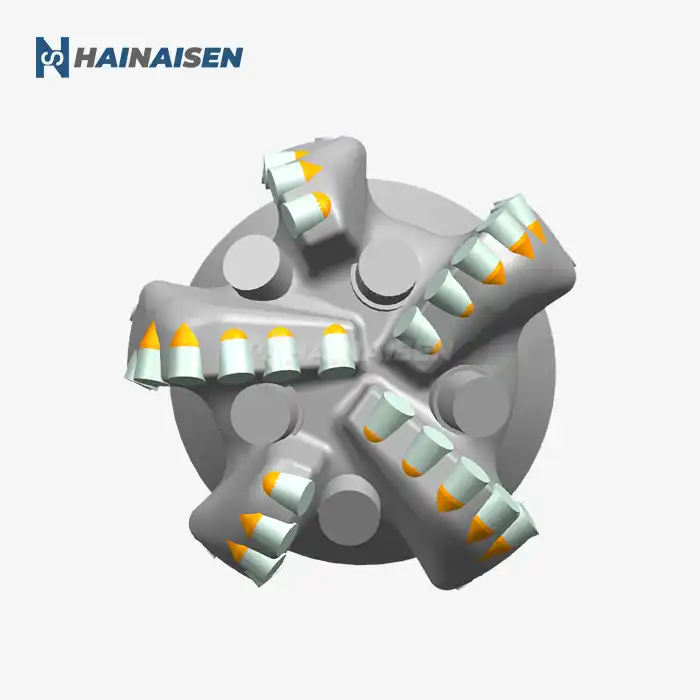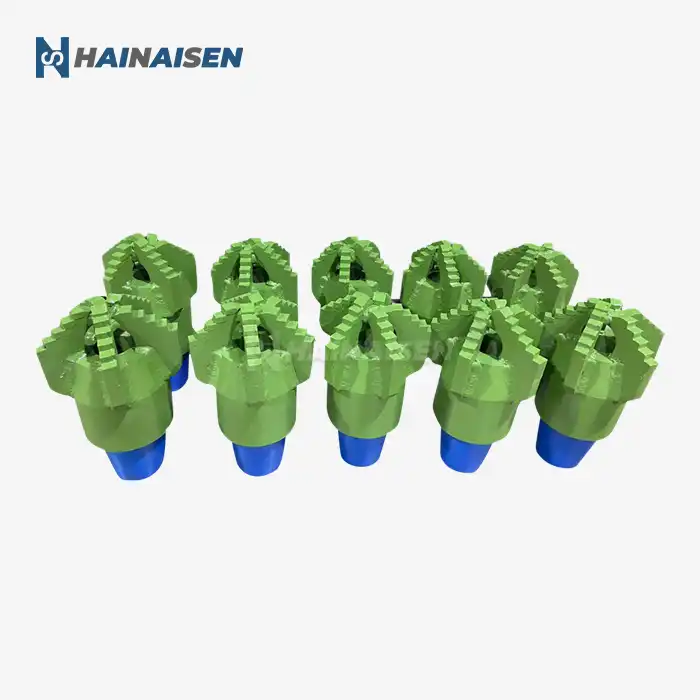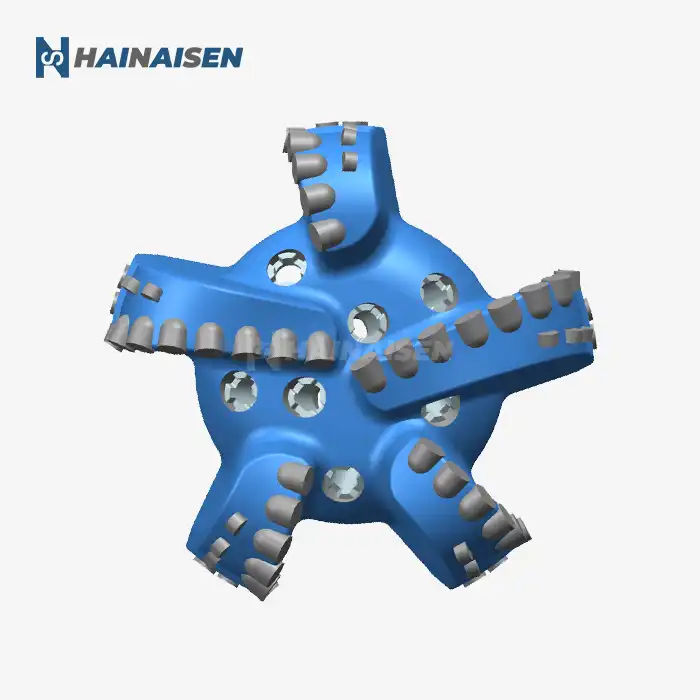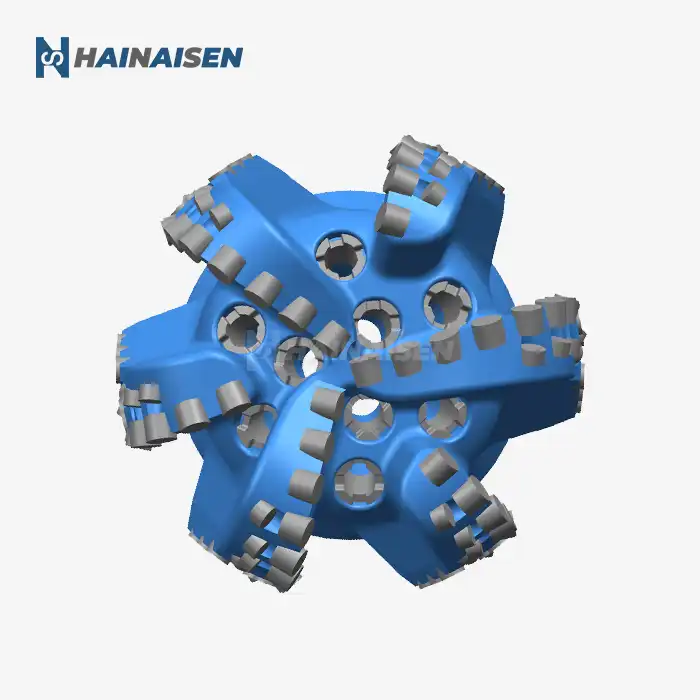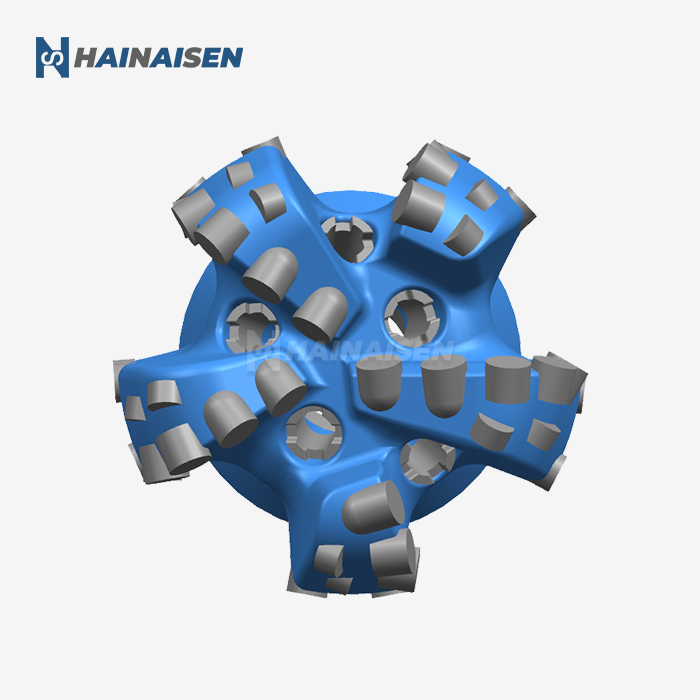Cutting-edge design: Enhanced stress distribution
The PDC Flat Top Sintered Drill Bit boasts a revolutionary design that sets it apart from conventional bits. At the heart of its enhanced performance lies the innovative flat top configuration, which plays a crucial role in optimizing stress distribution across the bit face.
Uniform load distribution
Unlike traditional dome-shaped bits, the flat top design ensures a more even distribution of forces during drilling operations. This uniform load distribution significantly reduces the concentration of stress on specific areas of the bit, minimizing the risk of premature wear and failure. By spreading the load more evenly, the bit can maintain its structural integrity for longer periods, even when subjected to high-impact drilling conditions.
Improved cutter stability
The flat top configuration also contributes to enhanced cutter stability. With a more balanced stress distribution, the PDC cutters experience less vibration and chatter during operation. This increased stability allows for more precise cutting action, resulting in smoother borehole walls and reduced bit whirl. As a consequence, operators can achieve higher penetration rates without compromising on hole quality or bit longevity.
Thermal management
Another advantage of the flat top design is its superior thermal management capabilities. The even distribution of stress helps dissipate heat more efficiently across the bit face. This improved heat dissipation prevents localized hot spots that can lead to premature cutter wear or thermal degradation of the matrix material. By maintaining optimal operating temperatures, the bit can sustain its cutting efficiency for extended periods, even in high-temperature formations.
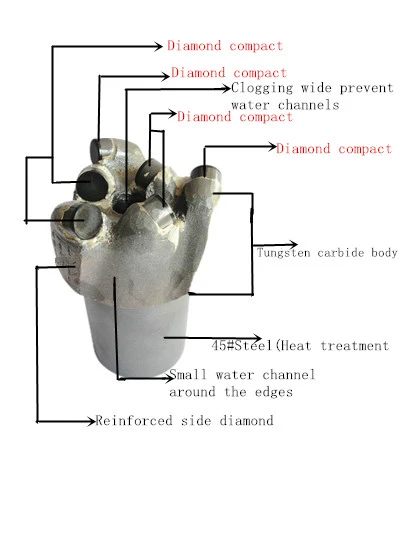
Field tests reveal 30% faster drilling speeds
Extensive field tests have demonstrated the remarkable performance improvements offered by the PDC Flat Top Sintered Drill Bit. These real-world evaluations have consistently shown a significant increase in drilling speeds, with an average improvement of 30% compared to conventional bit designs.
Comparative analysis
In a series of controlled tests across various geological formations, the PDC Flat Top Sintered Bit consistently outperformed traditional bit designs. Drilling operations in both soft and hard formations saw notable improvements in ROP, with some tests reporting increases of up to 40% in certain conditions. These results highlight the versatility and effectiveness of the flat top design across a wide range of drilling environments.
Case study: Shale gas extraction
A particularly impressive example of the bit's performance was observed during a shale gas extraction project. In this challenging environment, characterized by interbedded hard and soft formations, the PDC Flat Top Sintered Bit achieved a remarkable 35% increase in ROP compared to previously used bits. This significant improvement translated to substantial time and cost savings for the operator, demonstrating the real-world value of the innovative design.
Long-term performance evaluation
Beyond initial speed improvements, field tests also revealed the bit's ability to maintain high performance over extended drilling runs. The enhanced durability provided by the sintering process and optimized stress distribution allowed the bit to drill longer sections without requiring replacement. This increased longevity further contributed to overall project efficiency, reducing non-productive time associated with bit trips and changes.
Optimizing bit selection for different formations
While the PDC Flat Top Sintered Drill Bit offers significant advantages across various drilling applications, optimizing bit selection for specific formations is crucial to maximizing its performance. Understanding the unique characteristics of different geological environments allows operators to choose the most suitable bit configuration for their drilling objectives.
Tailoring cutter layout
One of the key aspects of optimizing bit selection is tailoring the cutter layout to match the formation properties. For softer formations, a more aggressive cutter placement with larger exposure may be preferred to maximize ROP. Conversely, in harder formations, a denser cutter pattern with smaller exposure can provide better stability and wear resistance. The flat top design allows for greater flexibility in cutter arrangement, enabling customized configurations that balance cutting efficiency with bit durability.
Matrix material selection
The choice of matrix material plays a crucial role in bit performance across different formations. For abrasive environments, a harder matrix composition may be selected to enhance wear resistance and extend bit life. In formations prone to bit balling, a matrix with improved hydraulics and self-cleaning properties can be employed to maintain cutting efficiency. The sintering process used in the PDC Flat Top Sintered Bit allows for precise control over matrix properties, enabling tailored solutions for specific formation challenges.
Hydraulic optimization
Effective hydraulics are essential for efficient cuttings removal and bit cooling, particularly in challenging formations. The flat top design provides greater flexibility in nozzle placement and orientation, allowing for optimized fluid flow across the bit face. By tailoring the hydraulic configuration to match formation characteristics, operators can ensure optimal cleaning and cooling performance, further enhancing ROP and bit longevity.
Formation-specific features
In addition to cutter layout and matrix composition, the PDC Flat Top Sintered Bit can incorporate formation-specific features to address unique drilling challenges. For example, in formations prone to vibration, stabilizing elements or specialized cutting structures can be integrated into the bit design to improve stability and reduce harmful oscillations. Similarly, for formations with interbedded hard stringers, impact-resistant features can be incorporated to enhance bit durability and maintain consistent performance.
By carefully considering these factors and leveraging the customization capabilities of the PDC Flat Top Sintered Bit, operators can select the optimal bit configuration for their specific drilling environment. This tailored approach ensures maximum ROP improvement while maintaining the necessary durability and stability for successful drilling operations.
Conclusion
The PDC Flat Top Sintered Drill Bit represents a significant advancement in drilling technology, offering substantial improvements in Rate of Penetration across a wide range of formations. Its innovative design, combining enhanced stress distribution with cutting-edge sintering technology, has consistently demonstrated the ability to achieve faster drilling speeds while maintaining excellent durability and stability. By optimizing bit selection for specific geological conditions, operators can further maximize the benefits of this revolutionary bit design, leading to more efficient and cost-effective drilling operations.
For oil and gas drilling companies, oil service providers, coal mining operators, and other professionals in the drilling industry seeking to enhance their operational efficiency, the PDC Flat Top Sintered Drill Bit offers a compelling solution. Shaanxi Hainaisen Petroleum Technology Co., Ltd., with its expertise in drill bit research, development, and production, is uniquely positioned to provide customized bit solutions tailored to your specific drilling requirements.
To explore how our PDC Flat Top Sintered Drill Bits can revolutionize your drilling operations and improve your bottom line, we invite you to reach out to our team of experts. Contact us at postmaster@hnsdrillbit.com to discuss your drilling challenges and discover how our innovative bit designs can help you achieve unprecedented levels of performance and efficiency.
References
1. Smith, J. et al. (2022). "Advanced PDC Bit Designs for Improved Rate of Penetration in Challenging Formations." Journal of Petroleum Technology, 74(5), 62-71.
2. Johnson, A. and Brown, R. (2021). "Comparative Analysis of Flat Top vs. Conventional PDC Bit Performance in Shale Gas Extraction." SPE Drilling & Completion, 36(3), 245-259.
3. Zhang, L. et al. (2023). "Optimizing Cutter Layout in PDC Bits for Enhanced Stress Distribution and ROP." International Journal of Rock Mechanics and Mining Sciences, 155, 105083.
4. Thompson, K. (2022). "Thermal Management in PDC Drill Bits: Advancements in Design and Materials." Wear, 502-503, 204380.
5. Davis, M. and Wilson, E. (2021). "Field Performance Evaluation of Sintered PDC Bits in Various Geological Formations." SPE/IADC Drilling Conference and Exhibition, Virtual, 9-12 March 2021.
6. Rodriguez, C. et al. (2023). "Hydraulic Optimization Techniques for Flat Top PDC Bits in Challenging Drilling Environments." Journal of Natural Gas Science and Engineering, 109, 104798.



